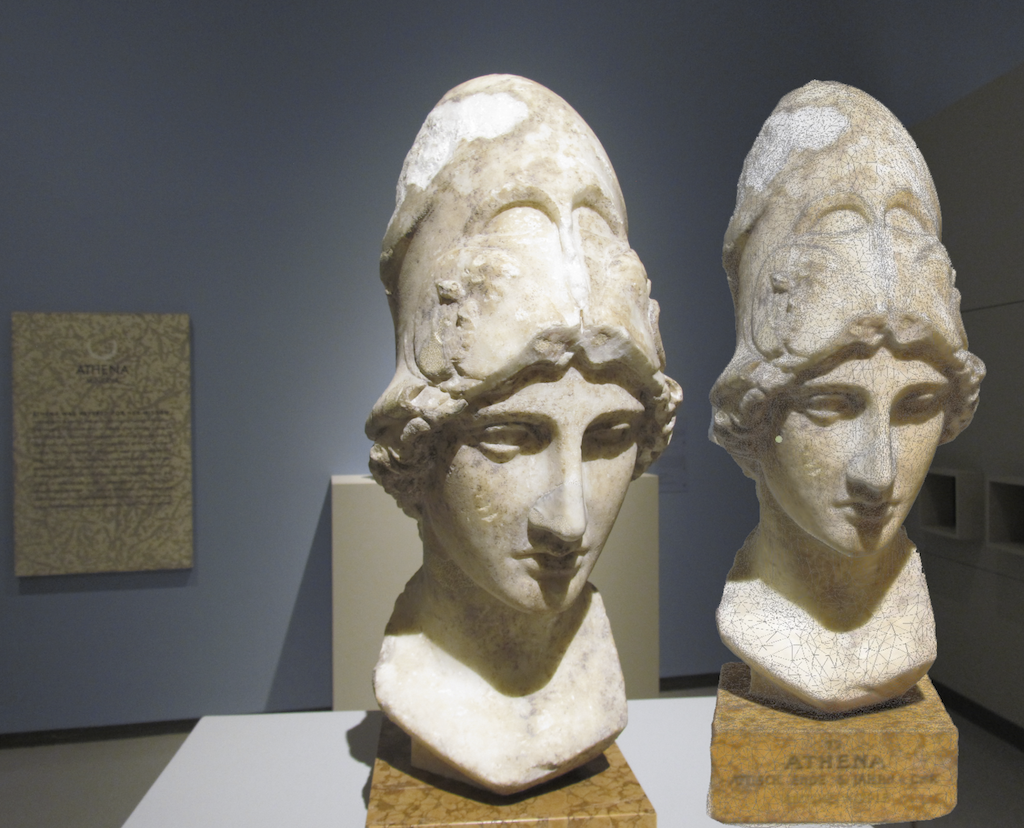
This is part one of a series describing practical methods of capturing 3D scans of museum sculptures.
I’ve had great success 3D scanning and subsequently 3D printing sculptures from museums around the world, so I thought I’d tell you how it can be done.
There’s much to tell, so this story will be split into several parts:
Part 1: Getting Organized
Part 2: Selecting Subjects
Part 3: Performing The Scans
Part 4: Processing Your Scans
Part 5: Fixing The Models
Part 6: Printing The Scans and Beyond
Let’s get started with the first part, Getting Organized
You’ve no doubt seen incredibly detailed 3D models of famous statues from around the world, and perhaps you’ve wanted to make some yourself. Perhaps you thought you wouldn’t be able to because you don’t happen to own any special equipment that might be required. Perhaps you don’t know how to deal with 3D scans to convert them into real, printable 3D models.

This is all very possible to do and almost anyone can do so.
The first step is to select a specific target sculpture or collection. Often this means either visiting an outdoor public sculpture site or a museum indoors.

In the case of a museum, you must take several precautions before embarking on your scanning journey. Many museums are justifiably concerned about their works and protect them from harm – or copying. This must be understood before you attempt to capture scans of a museum’s pieces.
As you’ll see in Part 3, we will be using photographic techniques to capture the 3D scans, so you won’t need to carry expensive, awkward and suspicious electronic gear into a museum. If you attempted to do so, you’d likely be shut down pretty quickly by the sometimes overly-protective museum security staff. Instead, all you’ll need is a good set of camera gear, which are often found in museums in any case.
The ideal rig would include a good quality DSLR with tripod, but it is also quite possible to do all this work with a reasonable quality handheld smartphone camera. Ensure you have one of those ready to go.
You’ll be taking a series of images of a subject in the museum. While pictures are often taken of museum sculptures by the public, you’ll be taking a lot more than a museum may be used to experiencing, although you might not technically be breaking any of their rules. Most of the time, museums simply prevent the use of flash photography to protect their works from slow degradation.

This leads to your first check: does the facility permit the use of cameras at all? If not, you’d best give up on the casual approach. To go further you would need to seek explicit permission from the museum or gallery to perform the scans, which would likely be denied for four reasons:
- The museum does not want their works copied, because they mistakenly believe it would somehow lessen the value of the original
- The museum does not want someone selling copies of their works without being compensated
- The museum mistakenly believes you will damage their works
- The museum has no idea what you’re talking about and defaults to shutting you down
In the very fortunate event that the museum does provide explicit permission to do the scans, you may further request that you be permitted to do the scanning in off-hours when it is far easier to get scans completed. They may not wish to do so, but might change their mind if you offered to provide them with some prints or the digital 3D models or perhaps even sign an agreement ensuring that you will not sell or distribute the 3D model or prints.
But for most of us, 3D scanning at the museum will be a casual affair. The next step is to pick a quiet day at the museum to scope out the subjects, or in the case of an outdoor subject, a good-weather day to inspect the sculpture and its surroundings.
On to Part 2, Selecting Subjects.

